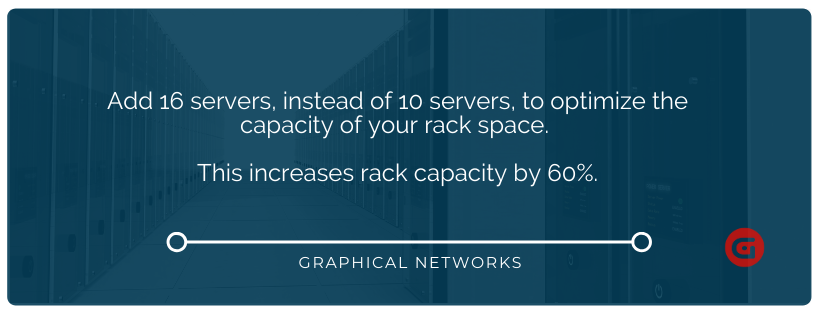
In my last article in this series on rack management using DCIM (data center infrastructure management), we talked about managing rack capacity, based on space, nameplate power, and weight availability — and how software such as netTerrain can help with the process of capacity.
To review that article, click here. In this article, let’s discuss one area that wasn’t really described in my last article: oversubscribing racks…
Oversubscribing racks: what does this mean?
Cooling and power considerations are critical for data center rack density requirements. For capacity planning aspects, determining the number of racks and power needed is a crucial component when planning on future growth (especially since rack space is at a premium at $1,200 per 1U of rack space).
In a recent AFCOM ‘State of the Data Center Report’, they uncovered that the average power density for edge deployments is 6kW-10kW per rack. Data Center Dynamics reports that the average power per rack is about 4 kW.
Let’s run an example for rack capacity, based on power and space availability:
Racks are typically allocated with 6,500 W or 6.5 KW of power. On the safe side, allocating 4 KW of power is the common practice. With this threshold, you can comfortably install 10 servers, based on 400 W (on the safer side) of power for each server which totals 4 KW. Assuming these servers are 2U in size and a 40U rack size, that leaves half the rack empty — and leaves a sunken cost of $24,000! Yikes: that’s a lot of money spent on empty space.
With netTerrain Environmental Monitoring Module (EM), which equips you with real-time power/temperature monitoring, you can set up power policies for racks to oversubscribe the rack with additional equipment.
Instead of using nameplate power, and the actual server measurements of 250 W of power — and capping the power at 4 KW, you can add 16 servers, instead of 10 servers, to optimize the capacity of your rack space. Doing so increases rack capacity by 60%! And, no need to worry: netTerrain EM can cap and control systems to reduce power consumption to ensure rack capacity is not exceeded and prevents circuit tripping.
When it becomes possible to add servers vertically, data center managers can free up square footage for other equipment, reduce or consolidate data centers, and and/or allows the data center to grow to accommodate future technologies.
To summarize, by expanding vertically (adding more equipment in racks) instead of horizontally (just adding additional racks) can increase the rack density without the need for very expensive infrastructure changes. For more information on our netTerrain Environmental Monitoring Module, click here.

